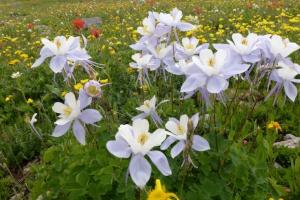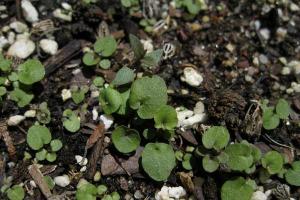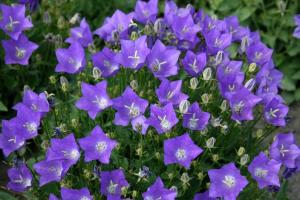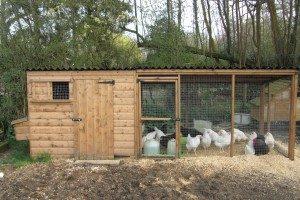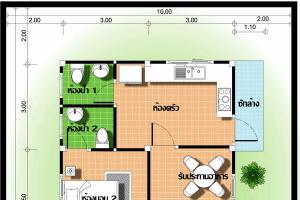When growing tomatoes in a greenhouse, it is not always possible to protect them from the most serious disease of the crop - late blight. We will consider in detail how late blight manifests itself on tomatoes in a greenhouse, how to combat it and carry out prevention.
How and when does late blight appear on tomatoes?
Late blight appears first on the leaves. Small dark, brownish or yellowish spots form, increasing over time. The leaves dry out and the disease spreads. Affected flowers fall off and the fruits rot.

Damage to tomato stem by late blight
Phytophthora spores enter the plant through the leaves, but for this they need moisture. Therefore, the development of late blight occurs in mid-summer, when rain is not uncommon and the nights are getting colder. Failure to follow watering rules (for example, sprinkling) also causes spores to enter the plant.
So, the disease most often occurs under the following conditions:
- the weather is damp, cloudy, cool;
- a large number of lime in the ground. It is used to reduce soil acidity, so the main thing is to know moderation in everything;
- temperature changes. In some regions, even in summer, cool nights and dew may occur. It is necessary to close the windows at night if the difference between day and night temperatures is significant;
- dense bushes. Tomatoes should not be planted very close; a pattern should be followed to prevent moisture accumulation at the roots. For the same purpose, stepsoning should be carried out in time and excess shoots should be cut off;
- weak bushes. It is necessary to fertilize on time so that the bushes receive the full range of microelements. This improves the tomato's immunity.

Late blight on tomato leaves
Phytophthora spores persist on tops, soil, and seeds. They can also spread through the air between bushes.
Attention! In dry, hot weather, the spores die within 2 hours. If you lower the humidity in the greenhouse and increase the temperature, you can get rid of the fungus without the use of additional drugs.
Prevention of late blight
Rather than treating late blight, which is extremely difficult to deal with, it is better to follow a set of measures to prevent its appearance in the greenhouse. First of all, this applies to the disinfection of soil and seeds, which can retain fungal spores. Potassium permanganate is suitable for this. The seeds are treated before planting, and water with potassium permanganate is poured into the holes before transplanting the seedlings. Tomatoes should not be planted after nightshades (potatoes, eggplants, peppers), which could retain disease spores.
Advice! It is worth choosing for planting hybrids and specially bred varieties that are resistant to the disease.

Before planting tomatoes, treat the seed against late blight
When leaving, you must follow these rules:
- in cloudy or cold weather do not water the bushes;
- feed in a timely manner mineral fertilizers containing phosphorus and potassium;
- water in the morning so that by evening the water is absorbed (only at the root);
- ventilate the greenhouse at high humidity;
- tie up bushes, thin out;
- Burn fallen leaves and tops harvested in autumn.
How to properly process
For prevention, it is worth spraying tomatoes with chemicals or solutions prepared according to folk recipes. Bushes should not be processed during rain or on a hot day, when the sun is especially active. It is better to choose evening hours on a non-rainy day.
Usually 3-4 times per season is enough to prevent the disease. If the summer is full of precipitation, prevention is carried out more often.

- When the plant has taken root, before the first ovary. The first ten days of July are suitable, when the disease usually begins to manifest itself. But this depends on the humidity conditions in the greenhouse.
- After 7-14-21 days, depending on the chosen method.
- When the fruits ripen. It is impossible to treat with chemicals during this period so that the substance does not remain in the fruit.
Treatment of late blight in tomato
Many experienced summer residents note that it is impossible to cure a diseased plant. At the first signs, it is better to remove it immediately so that the disease does not spread further. The bush will need to be burned. If there are green fruits on it, you can try to save them. Dip them in hot (65°C) water, wipe thoroughly and leave them on a windowsill or other warm, illuminated place to ripen.
Of the traditional remedies for treatment, they are most often used Bordeaux mixture or Burgundy. You can make the mixture yourself from lime and copper sulfate or buy ready-made ones at a garden store. The method is well proven, although somewhat outdated.

Fitosporin
Greater efficiency is noted when spraying, incl. for the purpose of prevention, Fitosporin. In addition to its medicinal function, the drug promotes plant development and better fruiting of tomatoes. It can also be added to regular irrigation water to kill fungal spores in the soil.
Among the effective drugs for the treatment of late blight, the following are used:
- Alirin-B;
- Gamair;
- Bio-Fungicide;
- Baikal EM-1.
At mass destruction To save the fruits themselves, you need to spray them with calcium chloride (10%).

Preparations for late blight
For therapeutic and preventive measures, antifungal drugs sold in pharmacies are used: Metronidazole, Trichopolum. Dissolve 10 tablets per 10 liters and spray on leaves, shoots and fruits. Repeated procedures can be performed every 7-14 days.
Traditional methods
Garlic infusion is traditionally used for the prevention and treatment of late blight. To prepare it, you will need to chop the shoots, leaves, arrows or cloves of garlic and add water for 2 days. After which the solution is filtered and the bushes can be processed. Iodine or potassium permanganate is often added to the infusion to enhance the effect. After a week, you can repeat the procedure.

Garlic-based folk methods are quite effective
Dairy products are used quite often. Lactic acid fungi are stronger and late blight loses in this fight. You can prepare a solution from 1 liter of kefir to 8-10 liters of water, leaving it for 2 days for the mixture to ferment. Some summer residents also add a drop of iodine. As soon as the seedlings have taken root, you can begin spraying. Frequency and periodicity do not matter. You can spray the plants with serum, diluting 1:1 with water.
Attention! To increase the immunity of tomatoes, they are treated with copper-containing substances. Sometimes copper wire is used to tie a tomato, piercing the stem of the plant with it to saturate it with copper.
There are also other folk methods for preventing late blight:

It is believed that foliar feeding with mullein is also very effective for the prevention of late blight. It helps increase immunity, which is why tomatoes can resist disease. 300 g of manure is infused in 8 liters of water. The first time feeding is recommended in the first half of June, the next time – after 2 weeks. In total, spraying is carried out 3 times during the summer.
We fight late blight with folk remedies: video
Late blight on tomatoes: photo




Late blight is a disease caused by a fungal infection that affects all nightshade crops. The disease causes the greatest damage to tomatoes. The first sign is dark spots on the leaves and stem, after which the fruits also darken. The disease most often manifests itself in cool and damp weather. Affects tomatoes as open ground, and in the greenhouse. In this article we will look at how to treat tomatoes against late blight in a greenhouse, the main reasons for the development of late blight and methods of prevention.
Reasons for the development of late blight
Phytophthora spores can be in the soil, on plant debris, on the walls, roof and beams of the greenhouse. Spores may also remain on a shovel, rake, or other garden tool. However, a small number of spores does not cause the development of the disease. The main cause of the disease is a combination of an increased number of spores, decreased plant immunity and unfavorable conditions.
The main reasons for the development of late blight:
- Excessive feeding of tomatoes with nitrogen fertilizers.
- Planting tomatoes in a bed where potatoes or tomatoes that suffered from late blight were previously grown. You should also not plant tomatoes next to potatoes.
- Thickened planting of tomatoes in the greenhouse, which reduces ventilation of the bushes.
- Excessive amount of moisture, especially when the air temperature drops. Therefore, watering should be limited, preventing water from getting on the leaves and stems. Tomatoes should be watered with warm, settled water.
- Using too much lime can cause the soil to become acidic, which can cause fungi to grow.
- Decrease in temperature and high humidity. When growing tomatoes in a greenhouse, it is recommended to ventilate it regularly, and when the temperature drops, close the doors at night.
- The reason for the development of late blight is weakened plant immunity caused by a deficiency of microelements, for example, potassium, iodine or copper.
There are other causes of symptoms that resemble late blight. They can result from exposed roots, blossom end rot, or magnesium and boron deficiency.
Prevention of late blight
The fight against late blight on tomatoes is a difficult and lengthy process. Must be observed preventive measures to prevent its occurrence. Basic preventive measures:
- Adding peat in case of accumulation excessive quantity lime This will restore the natural balance of the soil.
- Compliance with the rules of plant circulation in the greenhouse. Tomatoes should be planted after optimal predecessors.
- Seedlings should be planted according to the established scheme for each variety. Thickening should be avoided, which will lead to poor ventilation.
- Ventilate the greenhouse regularly to maintain optimal temperature and humidity levels.
- It is recommended to water in the morning so that the moisture has time to be absorbed.
- If the air temperature has dropped and the weather is damp and humid, it is better not to water the plants during this period. It is recommended to only loosen the soil.
- Periodic preventive spraying of bushes should be carried out folk ways or chemicals.
- Use late blight-resistant tomato varieties that are intended for growing in a greenhouse.
- It is necessary to regularly feed tomatoes, using fertilizers based on potassium, phosphorus and calcium.
Prevention of late blight on tomatoes in a greenhouse - The best way combating a dangerous disease. However, in some cases the use of chemicals and folk remedies will be required.
Basic methods of treating tomato late blight in a greenhouse
Experienced summer residents claim that it is impossible to cure tomatoes from late blight. At the first signs of the disease, damaged bushes or parts thereof must be removed and burned. If there are unripe fruits on the bush, they can be picked and left to ripen in a warm place.
If late blight appears on tomatoes in a greenhouse, how to fight it? various methods. As a rule, it is recommended to use Burgundy or Bordeaux mixture. You can also prepare your own solution based on copper sulfate and lime, which are used to treat bushes for treatment and prevention.
Also, drugs such as Gamair, Alirin-B, Bio-Fungicide, Baikal EM-1, Metronidazole are used to combat the disease. And Fitosporin is considered the most effective. One of the most effective remedies for late blight. This drug is effective not only for prevention, but also for treatment. In addition, the product increases the fruiting of tomatoes. The drug must be added to water during normal watering. This will kill fungal spores that may long time persist in the soil.
Another effective remedy is Trichopolum. This is a fairly strong antibiotic that is used for treatment and prevention. You only need one tablet of the drug per liter of water.
In addition to these preparations, it is effective to use ash, which is an important source of minerals. Use the drug to treat bushes immediately after planting seedlings, and then at the moment the first ovaries appear. In case of massive damage to the bushes, it is necessary to immediately remove the surviving fruits, and then spray them with calcium chloride.
The dangerous late blight fungus, having settled in a greenhouse, negatively affects the quality of the future harvest. Infection of plants is indicated by black spots on the fruits, which gradually increase in size, affecting the vegetable completely, and then spreading to healthy plants. It is possible to get rid of late blight in a greenhouse (including polycarbonate), but it is important to begin this immediately after discovering the “enemy”. It is also necessary to adhere to certain rules that will help not only win this unequal battle, but also prevent the disease.
Danger of disease
Even greenhouse plants can become infected with late blight. Externally, the fungus is a white cobweb that entangles the inside of the plant. There it grows and develops, taking from the plant vitality. Ripe spores are released outside, where they are transported with the help of water to neighboring plants. After this, a new cycle of fungal development begins.
Even severe frosts are not afraid of spores: they wait out the winter, and when the air temperature rises to 10°C they begin to actively develop.
Symptoms of the lesion
Before you throw all your energy into fighting the fungus, you need to make sure that it has actually settled in the room. At first, late blight does not appear outwardly in the greenhouse. But gradually, as the disease progresses, external changes. The first alarming symptom is yellowing of the foliage. Then:
- the appearance of brown spots on the green mass of the plant;
- the formation of a white fluffy coating on the inside of the leaves;
- the appearance of black spots, as if slightly pressed into the fruit;
- fruit formation irregular shape, long harvest ripening;
- rotting and softening of fruits, the appearance of an unpleasant odor.

The main causes of late blight are lack of fresh air (poor ventilation), waterlogging and non-compliance with temperature regime(most often a decrease in temperature).
Unfortunately, it will not be possible to save the affected plant. But it is not only possible, but even necessary to expel micropests from the environment. Its spores in the soil survive even negative temperatures. Therefore, you should not hope for them to freeze in an unheated room. To avoid crop loss from late blight next year, it is necessary to treat the greenhouse immediately after harvesting the fruits.
If you find late blight in a greenhouse or greenhouse, what to do depends on what stage of development the crops are at. The ripe crop is harvested and the room is disinfected. In the case when the fruits are not yet ripe, their development is supported by folk remedies, and in autumn period disinfect the entire greenhouse space.
Folk remedies
It is often not recommended to use chemicals and preparations with copper. After all, remaining in the soil, they enter the fruits, and then into the human body, negatively affecting its health. Effectively combat late blight in a greenhouse with folk remedies:
- Garlic. To prepare the infusion, you need to add 0.5 tsp to 1.5 cups of peeled garlic cloves. potassium permanganate and pour in 2 liters of water. Then the container is closed and left for half an hour. After this, the infusion is diluted with a bucket of water and used for watering in an amount of 0.5 liters for each bush.
- Dairy products. Milk is mixed with water in proportions of 1:10, and then used to spray the bushes. Lactic acid bacteria stop the development of the fungus, which allows the bush to continue development and fruiting. For the same purpose, it is good to use whey (mixed with water in a 1:1 ratio). The spraying procedure is carried out twice a month all summer.

- Salt. Dissolve a glass of the substance in a bucket of water and spray the plants. After drying, the bushes form protective film, which prevents the penetration of pathogenic organisms.
- Yeast. Mix with water in a ratio of 1:10 and use for irrigation.
- Ash. Sprinkle the soil before watering or spray the bushes with a solution.
- Copper. copper wire You can hang them along the bushes or wrap them around them, threading them through the stem.

Iodine in a greenhouse against late blight
Antiseptics are used not only to disinfect wounds. You can use iodine in a greenhouse against late blight by spraying the solution on plants. Its use in conjunction with dairy products will be effective:
- With whey: add a drop of iodine for each liter of product. The resulting solution is diluted with water in a ratio of 1:10 in the case of watering at the roots or 1:3 for spraying.
- With milk: take 1 liter of low-fat product and 20 drops of iodine per bucket of water. Spray the solution twice a month.
Spraying in the greenhouse is carried out early in the morning or in the evening. It is important to spray with fine sprays so that the surface is treated better. In this case, too much hydration will not be very beneficial.
An interesting method of using iodine from late blight in a greenhouse in the video below.
Greenhouse treatment
There is a very high probability that fungal spores will overwinter in greenhouse soil, plant debris or structural elements. Therefore, all disinfection measures are aimed at treating the entire greenhouse space. Careful work in this direction will not only get rid of late blight, but also prevent its recurrence.
Conventionally, processing agents are divided into biological, chemical and temperature. The first ones are used as preventive protective measures, the second ones are used to treat the structure and soil, and the third ones disinfect the soil. Any means are used only after thoroughly cleaning the room.
At this stage, all instruments are removed and disinfected. Clear the greenhouse of all materials used in the growing process. Collect and burn all plant residues along with the roots to destroy the fungus remaining in them.
To get rid of fungal spores on a greenhouse structure, it is necessary to disinfect it. For greater efficiency it is necessary to seal the structure and cover up all the cracks found. When carrying out disinfection, the following rules must be observed:
- The air temperature must be at least 10°C, otherwise the greenhouse treatment will not be productive enough.
- It is advisable to spray all surfaces with water to increase the toxic properties of the substance used.
- It is necessary to use protective equipment: a gas mask or a respirator. This is due to the high toxicity of the drug.
The greenhouse against late blight is fumigated with sulfur bombs or lump sulfur. The drug is used at a rate of 50-80 g per 1 m³. If a spider mite is detected, the dosage is increased to 150 g for the same volume.

You can also use regular sulfur to combat late blight. Metal sheets with sulfur are placed inside along the perimeter of the greenhouse and set on fire. Then the room is closed for 3 days. After this, ventilate well.
You can carry out wet treatment of the greenhouse (it is especially good for metal structures, which sulfur destroys quite quickly). In this case, all surfaces are thoroughly sprayed with a solution of bleach (0.4 kg per 10 liters of water, infused for 4 hours) or a solution of copper sulfate (75 g for the same amount of water).
Greenhouse surfaces are treated against late blight and slaked lime solution. All parts of the structure are coated with it. Metal parts are additionally treated with boiling water, and wooden parts are cleaned with a brush. After whitewashing, the room is ventilated, and after half a month the procedure is repeated.
Soil disinfection
Before disinfection, the soil must be dug up.

Replace completely upper layer, fertilize and then disinfect different ways:
- First, they pour boiling water over it and then cover it with polyethylene to destroy all pathogens.
- Treat with a solution of copper sulfate (a tablespoon per 10 liters of water). It is important to remember that frequent use of vitriol contributes to the accumulation of copper in the soil and plants. And this negatively affects human health.
- Add dry lime. This cannot be done before planting bushes (quicklime powder will negatively affect the growth and development of the plant), so it is processed in this way only in the fall.
- Disinfect with formaldehyde. For this purpose, they first dig ditches, pour the substance into them, and then cover them with earth and leave them for a couple of weeks. After this fortnight the room is ventilated.
- Special solutions that are designed to disinfect soil in a greenhouse.
Winter care activities
Winter is a very harsh test for plants in heated greenhouses. By this time, the room is carefully sealed to prevent cold air from entering. The result is a lack of fresh air, high humidity and cool temperatures, which contribute to the development of late blight. The only option to prevent the disease is ventilation, which will increase the amount of oxygen supplied. It is important to ventilate at least a fifth of the room.

Spring disinfection of the greenhouse
In the spring, the inside of the room is first wiped with a solution of freshly slaked lime, to which vitriol is added. Together with this procedure, all mosses that appear on the frame are destroyed. After this, thoroughly wash all glass surfaces.
All surfaces are thoroughly washed with soapy water: both internal and external, without missing a single crack. You can also use garlic solutions to treat walls and shelves, mustard powder and tobacco ash.
Prevention of late blight
Growing plants in a polycarbonate greenhouse has several advantages. Among them is the ability to create certain conditions that will not allow harmful microorganisms to develop normally. In order not to be afraid of the appearance of late blight on tomatoes in a polycarbonate greenhouse, you must adhere to following rules:
- mulch the soil;
- avoid dense plantings;
- tie up tall bushes so that the root part is constantly ventilated;
- Remove all excess foliage and unnecessary shoots.
And in order to avoid late blight getting into the greenhouse from the outside, it will be necessary to plant the main carriers of the disease - tomatoes and potatoes - away from the room. And then you can sleep peacefully without worrying about it insidious disease.
Phytophthora – scary word for agronomists, gardeners and gardeners. This is a very dangerous disease that affects nightshades and some others. cultivated plants, such as strawberries or cucumbers. As a rule, plants infected with late blight cannot be treated; the only way out is to destroy them.
Late blight: danger of fungal disease
Late blight is a fungal disease that affects plants even in a polycarbonate greenhouse. Just like any mushroom, a late blight spore consists of mycelium, conidia and sporangia. Appearance mycelium resembles a spider's web white. As a rule, it lives and develops in plant tissues. Fungi reproduce through spores produced in sporangia. After the spores mature, the sporangium membrane ruptures, releasing the spores. After this, they spread along with water, ending up on plants, where a new life cycle of late blight begins. Phytophthora spores are not afraid even of severe frosts. Active development of spores begins after the temperature rises to 10 degrees Celsius.  The first sign of late blight is the appearance of brown spots on the stems and leaves of plants. At high air humidity inner part leaves are covered with a white coating. Young potato and tomato tubers affected by late blight become covered with dark depressed spots, and the skin becomes fragile. It is through the skin that the plant becomes even more infected, simultaneously spreading the disease to neighboring plants. If tomatoes are not treated for late blight in a timely manner, the fruit tissues quickly rot and decompose, emitting a rather unpleasant odor.
The first sign of late blight is the appearance of brown spots on the stems and leaves of plants. At high air humidity inner part leaves are covered with a white coating. Young potato and tomato tubers affected by late blight become covered with dark depressed spots, and the skin becomes fragile. It is through the skin that the plant becomes even more infected, simultaneously spreading the disease to neighboring plants. If tomatoes are not treated for late blight in a timely manner, the fruit tissues quickly rot and decompose, emitting a rather unpleasant odor.
Often gardeners, in an attempt to at least partially save the harvest, pick green fruits and hide them for ripening. But along with the infected fruits, late blight fungi enter the box and after some time infect all other fruits.
Did you know? Potatoes and tomatoes are affected by fungi of the species Phytophthora infestans, which literally means “plant destroyer” in Latin.
How to treat a greenhouse against late blight

Preparation for the new planting season is carried out in the autumn, immediately after harvesting. In a greenhouse, especially one made of polycarbonate, the likelihood that late blight spores will persist in the top layer of soil, on plant debris or structural elements of the greenhouse is very high. Therefore, when growing plants in greenhouse conditions, it is imperative to carry out treatment against late blight. In this case, you will not be thinking about how to save tomatoes from late blight, but where to place the entire harvest.
Thorough disinfection of the greenhouse will destroy late blight spores and also prevent the occurrence of the disease in the future. Treatment agents for late blight can be roughly divided into:
- biological;
- chemical;
- temperature.
Cleaning the greenhouse from plant debris and additional materials
 Before disinfecting the soil from late blight with chemicals, it is necessary to clean it of plant residues: tops, missing fruits, roots and weeds.
Before disinfecting the soil from late blight with chemicals, it is necessary to clean it of plant residues: tops, missing fruits, roots and weeds.
You also need to clean the greenhouse of old twine and trellises.
Even if the plants were not diseased, due to the high concentration of plantings, they still left behind a large variety of pathogenic organisms. This is why processing polycarbonate greenhouse must be accompanied by the burning of all plant residues and other materials. If you do not do this, then after winter all microbes will become active and begin to infect young plants.
Important! If late blight has spread through the tomatoes and potatoes, then along with the destruction of plant residues, be sure to disinfect all garden tools.
Disinfection and treatment of the greenhouse
Treating a greenhouse against late blight allows you to protect plants and get good harvest. The greenhouse can be made of glazed window frames, from polycarbonate or from ordinary film. Before proceeding with gas disinfection, it is necessary to check the tightness of the greenhouse structure and cover all cracks. All disinfection work is carried out at a temperature not lower than 10 degrees Celsius. When disinfecting, the greenhouse room is fumigated with sulfur blocks or lump sulfur. The average dosage is 50-80 g of sulfur per cubic meter, when infected spider mite the dose is increased to 150 g. In order to increase the toxicity of the fungicide, it is recommended to pre-spray all surfaces of the greenhouse with water.  Treatment of a polycarbonate greenhouse in the spring against late blight must be carried out using a respirator or a gas mask. The greenhouse must be fumigated with sulfur burning on baking sheets, which are placed around the perimeter of the structure. After the sulfur ignites, the greenhouse is tightly closed for three days. After this period, the greenhouse must be thoroughly ventilated.
Treatment of a polycarbonate greenhouse in the spring against late blight must be carried out using a respirator or a gas mask. The greenhouse must be fumigated with sulfur burning on baking sheets, which are placed around the perimeter of the structure. After the sulfur ignites, the greenhouse is tightly closed for three days. After this period, the greenhouse must be thoroughly ventilated.
Unfortunately, this method is not suitable for metal greenhouses, since sulfur quickly corrodes the protective layer of the metal. Therefore, in such greenhouses they resort to wet disinfection. The essence of this procedure is to generously spray all surfaces of the greenhouse, including the soil, with a solution of bleach. To prepare the solution, 400 g of lime must be diluted in a bucket of water and allowed to brew for 4 hours. You can also use a solution of copper sulfate (dilute 75 g of the substance in a bucket of water).
 Before treating a greenhouse in the spring against late blight, especially if its frame is made of wood, it is necessary to wipe the structural elements a solution of freshly slaked lime with the addition of vitriol. This will protect the tree and add light to the greenhouse. Also, along with chemical treatment, it is necessary to destroy all the moss and lichens that have grown over the summer on the greenhouse frame.
Before treating a greenhouse in the spring against late blight, especially if its frame is made of wood, it is necessary to wipe the structural elements a solution of freshly slaked lime with the addition of vitriol. This will protect the tree and add light to the greenhouse. Also, along with chemical treatment, it is necessary to destroy all the moss and lichens that have grown over the summer on the greenhouse frame.
After disinfection, it is necessary to thoroughly wash all glass surfaces of the greenhouse. For this, a weak solution of any kitchen cleaning agent is suitable, which is applied to the surface using a sprayer. After this, all that remains is to wipe the glass with a nylon brush and rinse it with clean water.
Did you know? Late blight was one of the causes of the great Irish famine of 1845–1849. Due to famine, the country's population dropped by a quarter in just a few years.
Soil treatment in a greenhouse
Upon completion of the disinfection procedures, it is necessary to take care of how to treat the soil after late blight. It is necessary to carefully dig up the top layer of soil and be sure to fertilize it with humus, peat, manure, based on the calculation of half a bucket per square meter.
 If you don’t know how to treat tomatoes against late blight, then for comprehensive protection mixture of ash and sand, with which the beds are filled. You can also use an aqueous solution of the Carbation fumigant to disinfect soil. It is recommended to use it when digging up soil when the soil temperature is 10 degrees Celsius.
If you don’t know how to treat tomatoes against late blight, then for comprehensive protection mixture of ash and sand, with which the beds are filled. You can also use an aqueous solution of the Carbation fumigant to disinfect soil. It is recommended to use it when digging up soil when the soil temperature is 10 degrees Celsius.
Winter ventilation of the greenhouse
Winter is a serious test for plants, since low temperatures can affect great harm for the future harvest. Winter ventilation of the greenhouse plays a big role in the question of how to properly protect tomatoes from late blight. Of course, if the greenhouse is heated in winter, then you don’t have to worry about freezing temperatures.
But heat for plants is not everything. Plants need to breathe, but, as a rule, the greenhouse is “clogged” very tightly in the fall to minimize exposure to low temperatures. As a result, oxygen levels become minimal. The only way out is to organize ventilation, thanks to which oxygen will flow into the greenhouse in sufficient quantities.
 When ventilating a greenhouse in winter, it should be assumed that at least 20% of the greenhouse is ventilated.
When ventilating a greenhouse in winter, it should be assumed that at least 20% of the greenhouse is ventilated.
If this is ignored, humid air will stagnate inside the greenhouse, which is an ideal environment for the development of late blight.
Important! The greenhouse ventilation interval in winter should be 5-10 minutes.
How to cure late blight of tomatoes in a greenhouse
The question of when and how to treat tomatoes against late blight depends on many factors: the size of the greenhouse, the type of plant crop, the time of year, and so on. Remember the main thing - you should not often use products containing copper, since it can be deposited in the ripening crop. Instead, it is better to resort to folk methods, including.
There is no universal recipe here, and in order to be “fully armed”, you need to comprehensively study this disease and methods of combating it.
Getting to know late blight
Causes of the disease
Unfortunately, late blight (a common fungal disease) is very dangerous for tomatoes growing in the open. The causative agents of this disease are primitive fungi, which are very persistent and live well in the soil in the form of spores, especially when there is a lack of environment copper
The danger of late blight is that it can destroy a tomato crop in less than a week.
The reasons for the appearance of late blight in greenhouses are as follows:
- Sudden changes in night and day temperatures.
- Joint cultivation in a greenhouse (or near it, since spores are easily carried by the wind) of several species and varieties of nightshades.
- Density and clogging, and as a result, weak air flow in the planting.
- Condensation under
- Heavy dew and frequent watering.
- Excess nitrogen.
Most often, tomatoes start to get sick from potato seedlings. The first signs of the disease appear on tomatoes after about 10 days.
Signs of tomato infection
What do plants affected by this infection look like? Late blight affects the leaves, stems, and fruits of tomatoes.

The stages of development of late blight are as follows:
- Brown coating on the edges of seedling leaves.
- Whitish spots in the center of leaf blades.
- Drying of tomato foliage.
- Brown and green spots of various shapes on the fruits.
- Tomato rot in the depths of the fruit.
Disease Prevention
Preventive actions
Naturally, the fight against late blight in a greenhouse should begin with prevention.
The main method of preventing the development of the disease is to destroy the conditions for the existence of late blight..
To do this you should:
- Plant nightshade crops as much as possible.
- Alternate planting tomatoes and cucumbers in the greenhouse.
- Do not overwater the plants, water only at the roots.
- Form one stem from the tomatoes.
- Regularly pluck old leaves from plants up to the second or third clusters.
- Thin out tomato plantings.
Variety selection and preplant preparation
Since late blight appears on plants in mid-summer, one of the prevention methods is to select early-ripening varieties of tomatoes for planting. Thus, we will have time to harvest before late blight begins to actively spread in the greenhouse.
Of the early ripening tomatoes, it should be noted:
- "Moskvich";
- "Ray";
- "Profitable";
- "Apple tree of Russia."
If you want to grow plants with medium and late ripening, then you should choose tomato varieties for the greenhouse that are resistant to late blight. You should not save when choosing and purchasing seeds; it is better to pay more for a high-quality variety, but you are guaranteed to save the harvest!
The following varieties will best resist late blight:
- "Heart of America".
- "Orange Giant"
- "Lights of Moscow".
Special mention should be made of small-fruited cherry tomatoes, which also resist infection very well.

Seed treatment before planting is also a preventive method. If you use seeds from your own harvest, they must be at least 3 years old - then they will no longer contain pathogens. Before sowing, purchased seeds should be soaked in a solution of potassium permanganate for 20-30 minutes.
Work in the greenhouse
In autumn, one should also not forget about the prevention of late blight. Before treating the greenhouse after late blight, it is better to burn all plant residues and materials (trellises, pegs). If the disease manifested itself in the current season, then it is optimal to remove the top layer of soil 5 cm deep.

Autumn prevention involves disinfection of the soil and greenhouse. To do this, you can use a sulfur bomb, steam the soil with boiling water, or treat it with chemicals.
Many people have a question: how to treat late blight in a greenhouse in the spring?
- When carrying out disinfection in the fall spring treatment before planting seedlings can be gentle: just use folk remedies for disinfection. Among the traditional methods, infusions of garlic and tobacco should be highlighted.
- If autumn disinfection has not been carried out, more aggressive agents should be used - a solution of copper sulfate or bleach.
- The plants themselves can be treated against late blight with Acrobat, Metaxil or any fungicide. The instructions for the drug will tell you in what proportion to dilute the substance and how to apply it for maximum efficiency against late blight.
Fighting late blight of tomatoes
Folk remedies
When preventive measures have not given the desired result, and you notice the first signs of late blight on tomatoes, it’s time to move on to active action. Moreover, it should be noted that the opinions of experienced farmers on the choice of drugs for late blight are divided: some prefer folk remedies, others prefer chemical industry drugs.
Let's look at how to treat a greenhouse against late blight traditional methods. Here are a few recipes that you can use to make your own solutions for late blight:
Recipe 1. Ingredients:
- 5 liters of water.
- 1 tbsp. soda
- 3 tbsp. vegetable oil.
- 1 tsp liquid soap.
The resulting mixture should be sprayed on the plants and the treatment repeated after two weeks.
Recipe 2.
- 1 liter of pine needles.
- 0.5 liters of water.
- 30 g of laundry soap.
Boil the pine needles for 5 minutes in boiling water, then strain through cheesecloth. After diluting the broth in a ratio of 1 to 5, add soap. We carry out spraying in the same way as in the first case.

Advice!
For achievement maximum effect It is better to use fresh solution.
The price of such preparations is low, but their effectiveness, when used correctly, is slightly inferior to industrially produced fungicides.
We use chemicals
Basic rule of use chemicals To combat late blight, it is to consume the fruits only after a certain quarantine period. This period should be at least 2-3 weeks from the date of the last spraying.

How to treat late blight in a greenhouse using Bordeaux mixture?
- It is very important to dilute the dry mixture correctly, since an acidic environment can cause chemical burns on the plant.
- Initially, it is necessary to treat the affected plants with a 0.5% solution of liquid, and again with a 1% solution.
- Repeated spraying is carried out after 2 weeks.
Another well-known assistant in the fight against late blight can be trichopolum (metronidazole), which is sold in any pharmacy. Dissolve 20 tablets in a bucket of water (10 l). The treatment is repeated every 10 days.
Treatment of a greenhouse against late blight can also be carried out with the following preparations:
- "Penncozeb".
- "Barrier."
- "Barrier".

Note!
If late blight appears on almost ripe tomatoes, then better harvest To remove unripe, than to carry out chemical treatments.
Conclusion
Thus, we see how dangerous the late blight disease of tomatoes is. (see also article) But now you are fully armed and can give a worthy rebuff to this disease. This means your harvest will be excellent. In the video presented in this article you will find additional information on this topic.



